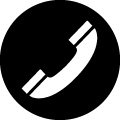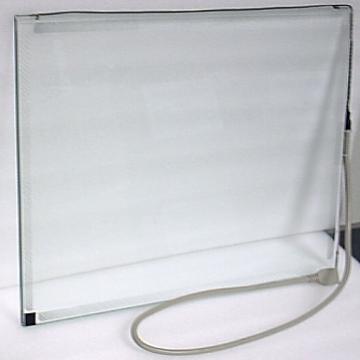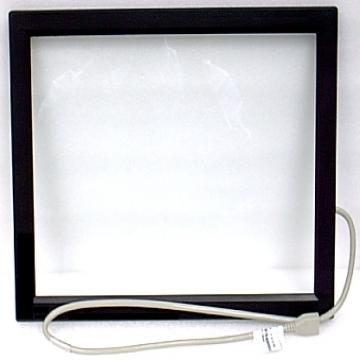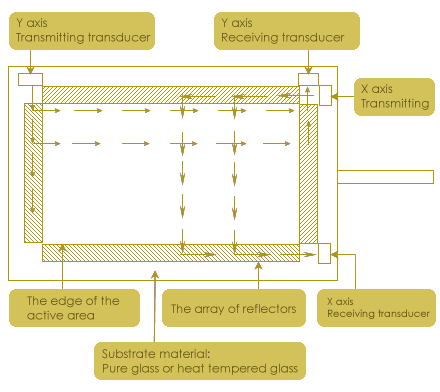
 CALL US: +31 (0)45-5748190 |
CALL US: +31 (0)45-5748190 |
Introduction of Surface Acoustic Wave (SAW) Touch Screen:
ATouch's Surface Acoustic Wave (SAW) Touch Screen is developed by its R&D team, with its own design and continuously updating the most efficient touch screens to worldwide customers. ATouch's SAW touch screen is suitable for all types of display monitors with RS。232 or USB interface:
。LCD flat display: 6.4"–42"
。CRT flat display: 17"-21"
ATouch supports 3 different types of SAW Touch Screen sensors for customers' option:
。Standard Sensor: in 3mm-thickness glass
。Anti。Vandalism Sensor: in 6mm-thickness heat strengthened glass, meets UL1950 standard.
。Protected Sensor: in 6mm-thickness heat strengthened glass, meets UL1950 standard with the ABS plastic frame covered around the touch sensor. It features dustproof, waterproof and break resistance.



The Surface Acoustic Wave Touch Screen is a pure glass surface touch screen which has no coatings or overlays on the glass. The benefits include:
。Superior image clarity with high light transmission
。Sensitive and fast response
。Durability, deep scratch resistance and abrasion
。Highest resolution
。Activated by finger, gloved hand, leather or soft stylus
。More than 50 million touches in a single point
。Dirt and splash sealed capability
。Custom size for OEM available
SAW Touch Screen working principle:
SAW Touch Screen parts include: Sensor / Control Card / Cables. There are 4 transducers attached to the beveled edges of the glass for both X and Y axes
( 2 for transmitting and 2 for receiving).

The control card sends electrical signals to transmitting transducers of both X and Y axes. The transducers convert these electrical signals from the control card into ultrasonic waves sent to the array of reflectors on the glass surface, and the acoustic waves are directed across to the front surface of the glass by the array of reflectors (the degree of the array of reflectors depends on the updating design). The opposite reflectors will gather and direct waves to the receiving transducers which will convert the waves into the electrical signals.
When a user touches the screen, the touch point coordinate is calculated by the control card comparing the received average amplitude of vibration of the acoustic wave signals and reference average waveform acquired when the touchscreen is in an untouched condition. The controller is capable of detecting the stay time of dirt, dust, water drops, scratches and other contaminants on the screen and then ignores them. If the contamination is removed, the controller relearns the original reference average waveform.
Public。access Application
。Point-of-information kiosks
。Gaming, lottery, and amusement
。Vending and ticket sales
。Public pay phones
。Multimedia marketing
。Banking / financial transactions